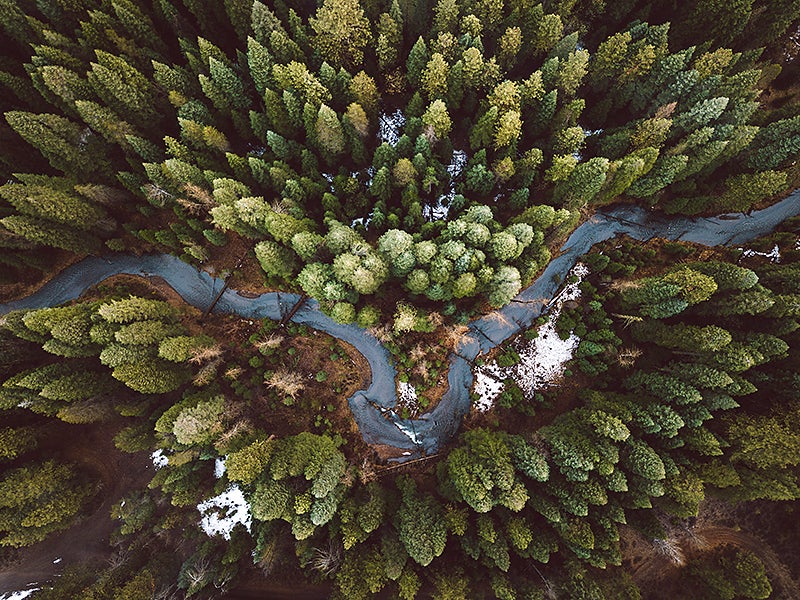New Campaign Urges Biden to Limit Logging in “Climate Forests”
The trees that offer the greatest climate benefit are also the ones the logging industry desires the most
Take a deep breath and transport yourself back to middle school, when you first learned that trees naturally absorb carbon dioxide, and release oxygen. Humans can’t survive without oxygen, yet carbon dioxide is a heat-trapping gas that drives climate change. This simple formula highlights why trees are undoubtedly our friends. The more carbon we have accumulating in the atmosphere, the more likely we are to inhabit landscapes stressed by heat waves, drought, wildfires, or perhaps even floods, hurricanes, or landslides – all consequences of a warming climate.
As it turns out, the larger and older a tree is, the more carbon it can take in and hold onto. Just by virtue of having existed for a long time, older trees helpfully cleanse and filter the air, absorbing a disproportionately high level of climate pollution as compared with younger trees. That’s why a new campaign has designated old-growth forests, as well as mature forests next in line to age into old-growth, as “climate forests.”
Patches of climate forests can be found nationwide, across federal lands that belong to everyone. Unfortunately, these unique and special stands of trees are also the most vulnerable. From the Pacific Northwest to Southern Appalachia, climate forests are winding up on the maps of logging interests motivated by profit.
Since larger trees fetch a higher lumber value, they are the most likely to be targeted for logging. Logging a climate forest not only removes decades of climate benefits in one fell swoop; it also creates a new source of greenhouse gas emissions. Enter the Climate Forests campaign, which officially kicks off Feb. 15.
Earthjustice, working in tandem with an ever-growing coalition of organizations, is calling on the Biden administration to make protection of these unique forests a central pillar of its national climate strategy. To meet climate targets and live up to international commitments made under the Paris Climate Agreement, the federal government must take proactive steps to safeguard these irreplaceable places. Our asks are very simple: Ensure that climate forests don’t vanish overnight by logging. Let trees grow. Protect the climate.
On Feb. 1, the U.S. Forest Service celebrated its 117th birthday as a federal agency. For more than a century, the Forest Service has been oriented around timber sales as a key function. Yet in the decades to come, it will be up to federal agencies like the Forest Service, which oversees millions of acres of public lands, to figure out how its operations can aid ecosystems, wildlife, and communities in becoming more resilient in the face of climate change.
If we’re going to meet the challenges in store, creating new safeguards for our climate forests is an obvious first step. Protecting older and mature forest stands can happen in tandem with the Forest Service’s very important responsibility of managing wildfire threats to ensure the safety of nearby communities. Safeguarding these forest stands, which tend to be more fire-resilient since they have thicker bark that won’t burn as easily, can help encourage a more fire-resilient landscape overall while removing from the air more of the carbon that drives hotter temperatures and helps create fire conditions in the first place.
If you are interested in learning more, visit the brand-new Climate Forests campaign page, where you’ll find lists of resources and the organizations working toward this goal. To get involved, join us and thousands more in telling the Biden administration that protection of these forests must be a priority.
Opened in 1978, our Alaska regional office works to safeguard public lands, waters, and wildlife from destructive oil and gas drilling, mining, and logging, and to protect the region's marine and coastal ecosystems.
Established in 1987, Earthjustice's Northwest Regional Office has been at the forefront of many of the most significant legal decisions safeguarding the Pacific Northwest’s imperiled species, ancient forests, and waterways.
